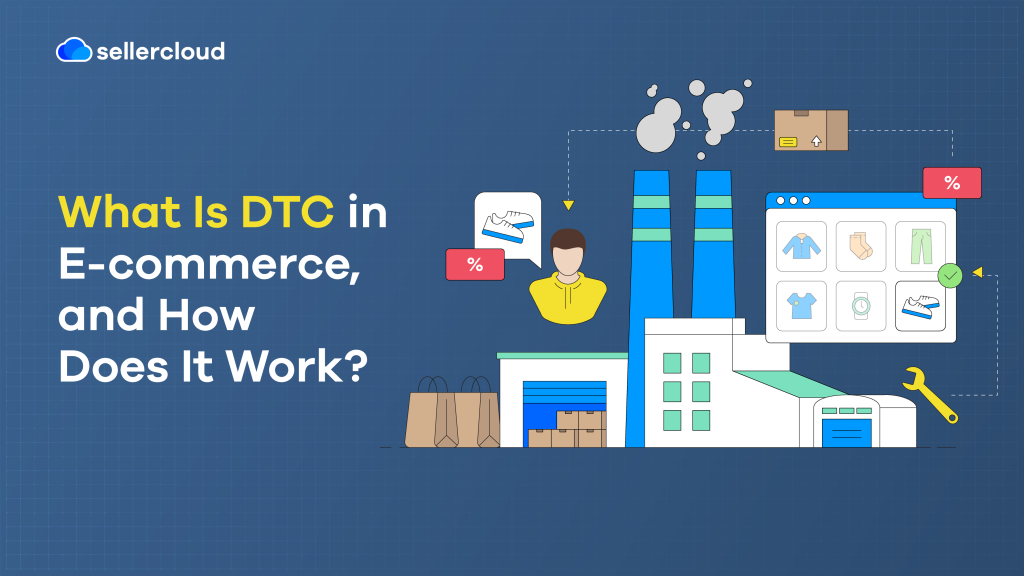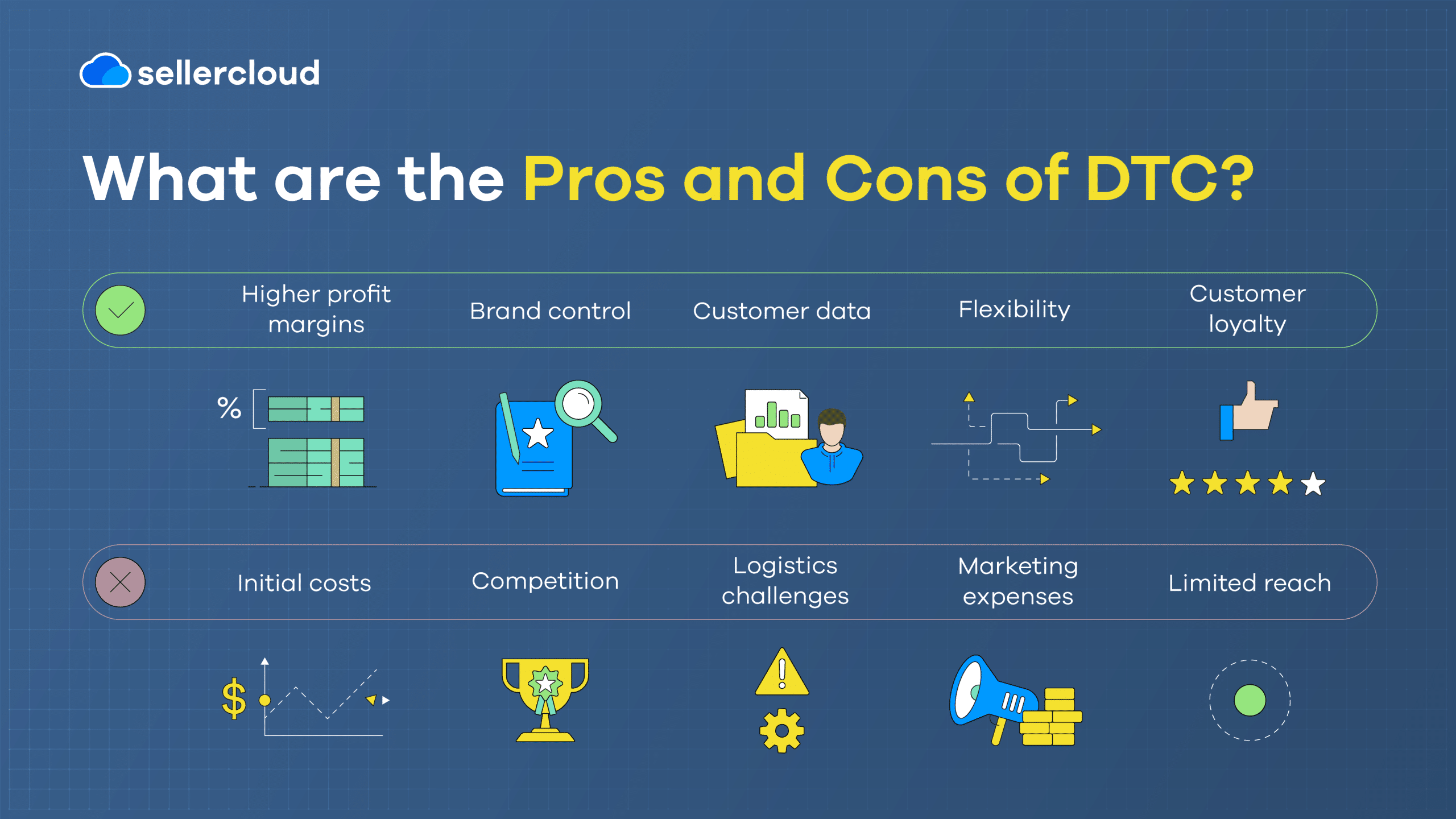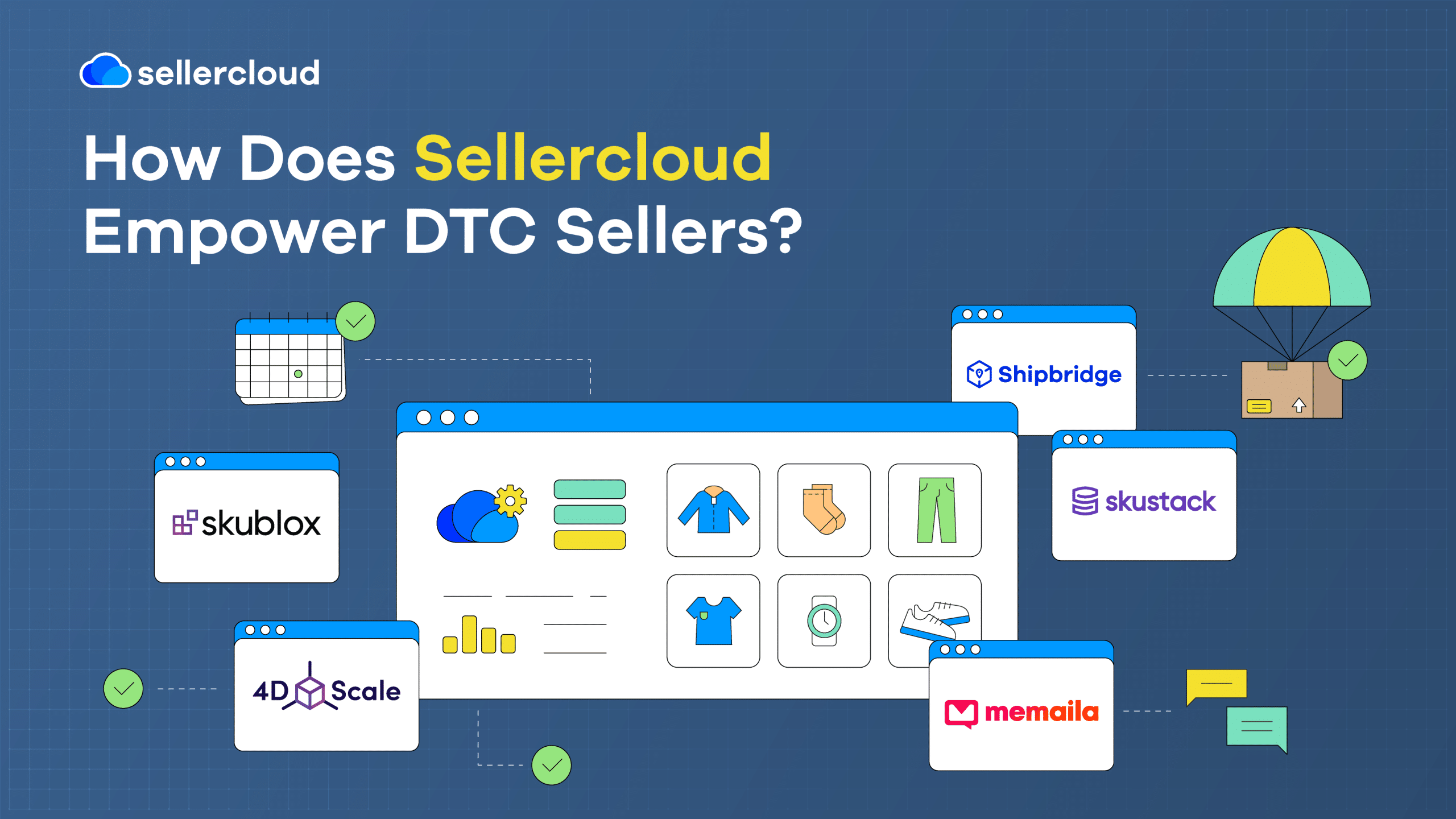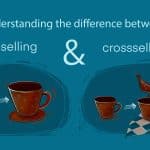
- DTC is an excellent way to reach more customers and gain more control over how products are sold. However, it is a big responsibility that requires a lot of work and investment.
- Descartes Sellercloud, with its wealth of features and integrations, is built to handle the needs of DTC sellers. Easily sell on your own DTC site and marketplaces and keep on top of it all.
DTC sales gained remarkable traction during the pandemic. According to Statista data, they surpassed $128 billion in 2021 and are forecast to exceed $213 billion in 2023.
DTC startups have also generated significant interest from investors. As of December 2021, Grove Collaborative, a DTC company focusing on environmentally friendly home and personal care products, raised $474.5 million, according to data on DTC startup funding.
But what about today? Is DTC ecommerce still growing, or is it on its way out? Should brands embrace or avoid DTC selling?
In this article, we’ll explain what DTC means, how it’s different from other ecommerce strategies, its pros and cons, its future in retail, and how Descartes Sellercloud empowers DTC sellers.
What Does DTC Mean?
DTC stands for ‘Direct To Consumer.’ You will also see the acronym ‘D2C’ in use (the ‘2’ taking the place of the ‘T’). DTC and D2C can be used interchangeably, but in the US—and most of the world—DTC is more commonly used.
How Does Direct-To-Consumer Work?
DTC works by bypassing common roles in ecommerce and retail. Wholesalers, online marketplaces, and distribution channels are unnecessary. In a DTC sales model, the brand or manufacturer sells products they produce directly from their site to consumers. Here’s a quick explanation of how DTC differs from traditional ecommerce and retail.
DTC: Manufacturer → Website → Consumer.
Traditional ecommerce & retail: Manufacturer → Wholesaler → Distributor → Retailer (websites and brick-and-mortar stores) → Consumer.
Direct-to-consumer is different from first- and third-party selling.
What’s the Difference between DTC and Wholesale?
The difference between DTC and wholesale is pretty simple. Selling to wholesalers involves bulk selling products to intermediaries (middlemen/third parties) like retailers and caters to a broader market. Wholesale selling (a form of third-party selling) can mean lower profit margins because products change hands so much before they even reach the consumer.
Ultimately, it means products are more expensive for consumers, preventing manufacturers from interacting with customers. Meanwhile, DTC focuses on direct sales to individual consumers from manufacturers. This gives manufacturers more brand control and often means higher profit margins and cheaper consumer products.
Is DTC the Same as B2C?
DTC differs from B2C, which stands for ‘Business To Consumer.’ It is easy to mix up the two because both are about businesses selling products to consumers (and both sound similar—ending in ‘2C’). The difference is that in a B2C business model, sales go from a retailer to the consumer. In DTC, sales skip retailers and go straight from the manufacturer to the customer.
DTC can sometimes be seen as a variant or subset of B2C because of this similarity. Some well-known brands practice both B2C and DTC selling. For example, you can buy Nike sneakers from a brick-and-mortar store or an online marketplace (B2C) and their website (DTC).
Is DTC the Same as Dropshipping?
No, DTC is not the same as dropshipping. Dropshipping still relies on retailers to make sales on behalf of the manufacturer. The primary similarity between DTC and dropshipping is that the supplier is in charge of fulfilling the order, and no third parties touch the inventory on its way to the customer (aside from perhaps couriers).
In dropshipping, products are sold on the retailer’s site, and then the manufacturer ships them directly to the buyer. Retailers still get a cut of the sale from the manufacturer. Though the retailers don’t hold the inventory, they still facilitate the transaction and communicate with the customer, and the sale most likely took place on their platform, so this is not the same as DTC. In a DTC model, the manufacturer deals with all these responsibilities.
Why Sell Directly to Consumers?
Because consumers want to buy directly from brands. According to a 2022 study on factors that most motivate consumers to buy DTC, the top three reasons were:

- 49% better price.
- 47% free delivery.
- 35% free returns.
Furthermore, brands can build closer relationships with customers that they wouldn’t get through wholesale. Through this relationship, they can learn more about consumers’ spending habits and what they like and dislike, enabling them to produce better products and improve how they are marketed.
In addition, brands can use marketing techniques to reach consumers, who can learn more about their products and potentially buy more.
Is Direct-To-Consumer Selling Cheaper?
The number one reason to embrace DTC is that it is cheaper for both the consumer and the manufacturer. As the statistics above highlight, it’s mainly about saving. It’s cheaper because it eliminates the middlemen—wholesalers, marketplaces, retailers, and distributors—who would typically receive a portion of your product’s profits.
Marketplace fees from platforms like Amazon and eBay, in particular, can significantly reduce a seller’s profits. However, there is a tradeoff. Marketplaces attract many customers, so it’s not necessarily the case that DTC will generate more revenue than selling on marketplaces. Furthermore, DTC selling can require partnering with more service providers for services that marketplaces would provide, making it more expensive if you’re not careful.
What are the Pros and Cons of DTC?

While there’s a lot to get excited about when exploring the possibilities of DTC, it’s by no means a perfect selling method. Here are the top five pros and cons of DTC ecommerce.
Top Five Pros of DTC
- Higher profit margins—Eliminating the middlemen can lower product prices and increase profits.
- Brand control—Maintain control over your brand image and customer experience (you won’t need to rely on middlemen to do this for you).
- Customer data—Direct access to customer data is valuable for personalized marketing, which can be leveraged to entrench the relationship between the consumer and the brand.
- Flexibility—Adapt quickly to market trends and customer feedback.
- Customer loyalty—Build stronger, lasting relationships with customers that keep them returning for more.
Top Five Cons of DTC
- Initial costs—High startup costs for website development, marketing, and logistics.
- Competition—Intense competition in a crowded DTC market.
- Logistics challenges—Managing shipping, returns, and fulfillment can be complex, costly, and time-consuming.
- Marketing expenses—Large investments are often needed to attract and retain customers.
- Limited reach—Smaller customer reach than established online marketplaces.
Is Amazon Direct to Consumer?
Arguably, you could call Amazon a direct-to-consumer brand when they sell products they produce on their marketplace, as they handle the entire product journey to the consumer. As an external seller, selling products on Amazon’s marketplace is not DTC selling; it is third-party selling because the product is listed on Amazon’s platform, and they facilitate the transaction (and fulfillment if you use FBA).
It is worth noting that invited sellers can become first-party sellers for Amazon. This is where Amazon buys products directly from you. Amazon effectively becomes a wholesale buyer for your business.
Are DTC Brands a Fad?
No. Major brands have jumped on the DTC bandwagon, and it looks like it’s here to stay. Though there has been some talk about DTC being on shaky ground in 2023, it is still growing. We should point out that many of the largest DTC players are established brands, and these large companies are most successful at direct-to-consumer selling.
According to data from Insider Intelligence, in 2024, digitally native DTC brands (brands that only exist online) are expected to generate $51.69 billion in US DTC sales, while established brands are estimated to generate three times more—$161.22 billion. It should also be pointed out that because DTC sales grew exponentially during the pandemic, some believe consumers will abandon them as the pandemic passes. However, growth estimates seem to contradict that opinion.
Finally, remember that DTC is still in its infancy and will likely grow and change with the market. It may be very different ten or so years from now.
Is DTC Profitable?
Yes, DTC can be a highly profitable business endeavor. Making an example of Nike again, according to their 2020 Annual Report, 35% of sales went through NIKE Direct, Nike’s DTC sales channel. However, DTC selling works better for some industries than others. According to an article by Emil Kristensen of Drip, “more than 75 percent of DTC brands in the US fall into the fashion and apparel, home and garden, or food and beverage categories.”
Fashion and apparel, particularly luxury brands and sports clothing, are known to do exceptionally well in DTC sales. Part of the reason is that fashion is constantly changing, and there will always be customers who want to keep up with the latest trends.
What Are the Risks of DTC?
The biggest risk to DTC sellers is that they typically rely on highly fragmented solutions to complete their operations, mostly third-party logistics (3PLs), explains Alex Vuocolo of Retail Brew. Stringing together so many partners and services is risky because there are more steps where things can go wrong, there is a lack of effective communication between these services, and there is less visibility into fulfillment.
Another risk is relying too heavily on DTC for sales and neglecting other sales channels, such as marketplaces and brick-and-mortar stores. Remember, while Nike made 35% of its 2020 sales through NIKE Direct, the other 65% were wholesale. Relying too much on DTC sales is risky because it could cut you off from many consumers.
Why Do DTC Brands Fail?
There are plenty of reasons why DTC brands fail. Most of them are related to inexperience in selling products online. Some of the top reasons DTC brands fail are:
- Highly competitive market—The number of DTC sellers has exploded in recent years, so many need to find a way to stand out above the competition, which is no easy task.
- Limited awareness—Many customers are unaware of DTC brands and fall into the habit of buying from marketplaces because it’s more convenient.
- Lack of trust—If customers come across a DTC brand they are not familiar with, they might not trust their payment portal or worry their complaints won’t be taken seriously if there are issues.
- Poor customer service—DTC brands can struggle to maintain a positive and professional image when dealing with customer issues.
- Lack of product desirability—The brand’s products are neither desirable nor useful to customers, and fewer people search for them online.
- Poor user experience—DTC sites that are hard to navigate can deter customers from completing purchases.
Lastly, as mentioned above, becoming overly reliant on DTC sales can also kill a DTC business instead of using it as a separate sales channel.
Is DTC the Future of Retail?
DTC has become an established part of the ecommerce landscape. It is one of the many ways sellers sell their products, and customers seek them out. However, while it is part of the future of retail, it probably will not dominate the future of retail. For example, retailers can be more convenient than DTC sellers regarding online purchases, where consumers may want to buy two different types of products. Let’s say the consumer wants to buy a pair of Adidas sneakers. They can go straight to their website and do that.
However, what if they want sneakers and other apparel from another brand or even exercise equipment? They’d have to make another purchase from another store. They’ll then have two or more shipments instead of one. At an ecommerce store, the customer may be able to buy a diverse range of products from one order. DTC sellers can’t always match this level of convenience.
More recently, some DTC sellers have shifted towards subscription services. According to an article by Tatiana Walk-Morris of Retail Drive, as much as 75% of DTC brands could offer subscription services by 2023. While subscriptions could provide a more stable income stream for DTC sellers, they don’t work for all brands.
Some services make sense for subscription services—items that need to be replaced frequently, such as water filters and light bulbs, but there are also subscriptions for items like apparel, which can be riskier. Convenience is often cited as crucial for subscription services. If the product doesn’t offer convenience, is there a need to offer a DTC subscription service?
One thing is for sure: DTC hasn’t ended, though there are still plenty of growing pains ahead as companies determine what offerings best suit their brands and products.
What Industries Are Most Threatened by the Growth of DTC?
The growth of DTC threatens brick-and-mortar sellers the most. However, DTC also threatens first- and third-party sellers. Because DTC stores can often sell products at a lower price than on Amazon, for example, they can potentially attract customers if they know this. Remember that Amazon and other major marketplaces are typically more favored than DTC stores.
According to an article by Insider Intelligence, more than 60% of US shoppers start product searches on Amazon when shopping online. Brick-and-mortar stores are nowhere near as vulnerable as people like to think. Following the success of DTC brands during the pandemic, many brick-and-mortar stores are investing heavily in ecommerce.
As Vuocolo explains, “Brick-and-mortar retailers, such as Walmart and Target, continue to invest in expanding their ecommerce and delivery capabilities—chipping away at what was once a crucial differentiator for DTC brands.” This two-pronged strategy—online and in-store—can give brick-and-mortar retailers an edge over DTC sellers.
DTC brands don’t typically have the real estate to compete with brick-and-mortar retailers, and so if brick-and-mortar stores outperform DTC brands online, they may struggle.
How to Start a Direct-to-Consumer Business?
Before you dive headlong into DTC, you should ensure that DTC is right for your business. It may be much better to stay in B2C or even B2B, depending on the products you produce and the demographic they appeal to. Younger shoppers—millennials and Gen Z—have largely driven the growth in DTC brands. Fashion and luxury items are most appealing to DTC buyers, and there is also an emerging market for convenient subscription-based items.
You must consider if your products meet these criteria, though DTC may expand beyond this demographic if it continues to grow in popularity. The next major consideration before moving into DTC selling is the upfront investment. You must invest in building a site and hiring people to keep it up and running and secure.
Though the goal is to have complete control over how customers buy from you, you will still need to rely on multiple services and employees to keep your site up. You will likely need to invest in:
- Hosting—You must pay for web hosting, or you may use a service like WordPress to build your site.
- Web design—You’ll need to invest in the website’s design, ensuring it’s practical and appealing to navigate (on mobile and desktop devices).
- Payment gateways—To fulfill payments, you will need payment gateway services like WooCommerce (if you use WordPress) to handle payments.
- Content—Images and descriptions will be needed for listings.
- Marketing—Once you are up and running, you must spread the word about your new DTC site.
- Security—Your site can become the target of cybercriminals seeking to steal from you and your customers, and you must take precautions to prevent this.
Remember, don’t give up on your other sales channels once your DTC channel is up and running. Think of your DTC site as another channel to reach people as part of your omnichannel selling approach. Maintain your presence on marketplaces like Amazon to maximize your reach.
How Does Descartes Sellercloud Empower DTC Sellers?

DTC sellers no longer need to worry about fragmented DTC solutions with Descartes Sellercloud. Descartes Sellercloud is a central hub for all your sales and the various services you need to keep your DTC operations running smoothly, minimize mistakes, free up time, and keep your business flexible.
With Descartes Sellercloud, you can:
- Compare different shipping fees to ensure you’re always getting the best price.
- Utilize advanced reporting and accounting to enhance your decision-making.
- React to supply chain surprises impacting your inventory and fulfillment quickly and keep operations running without a hiccup.
- Automate processes to save time and reduce human error.
You can continue to sell on major marketplaces, such as Amazon, while selling through your DTC site and maintaining visibility over your complete inventory. Plus, edit your DTC listings like you’d edit them on your marketplaces and avoid logging into different platforms simultaneously.
Descartes Sellercloud also offers a range of products to help your business with inventory management and fulfillment, such as Skustack, Shipbridge, and many more. Finally, with 350+ integrations, you’ll have everything you need for your DTC business—and the ability to create custom plugins specifically for your operations.
Want to learn more? Request a Descartes Sellercloud demo today.
Key Points
You’re now an expert on DTC. Before you leave, be sure to remember these key points.
- ‘DTC’ stands for ‘Direct To Consumer.’ It can be used interchangeably with D2C but differs from B2C selling and dropshipping.
- The primary benefits of DTC selling are that it cuts out the middlemen, which makes it cheaper, and allows the seller to have a closer relationship with the customer.
- DTC is by no means a fad. Many well-known brands have embraced DTC selling and will profit more than smaller businesses. DTC subscription services are becoming more popular.
- It can be risky for small businesses to rely too much on DTC sales and neglect other sales channels, such as online marketplaces, which garner more internet traffic.
- Descartes Sellercloud is built for DTC sellers. It features many features, integrations, and products to help sellers stay on top of their operations.




